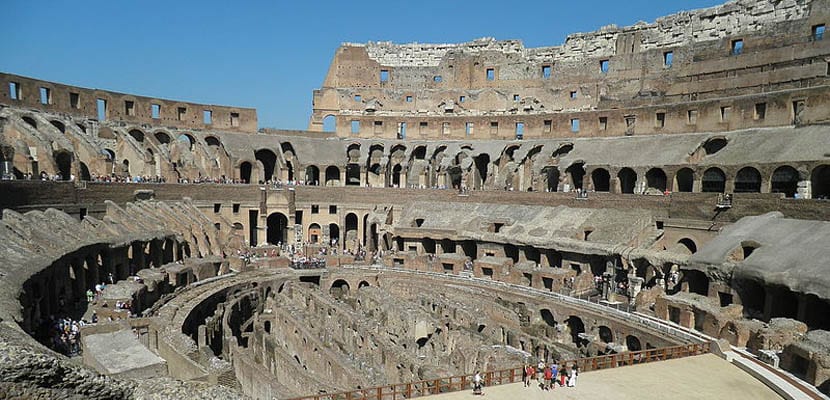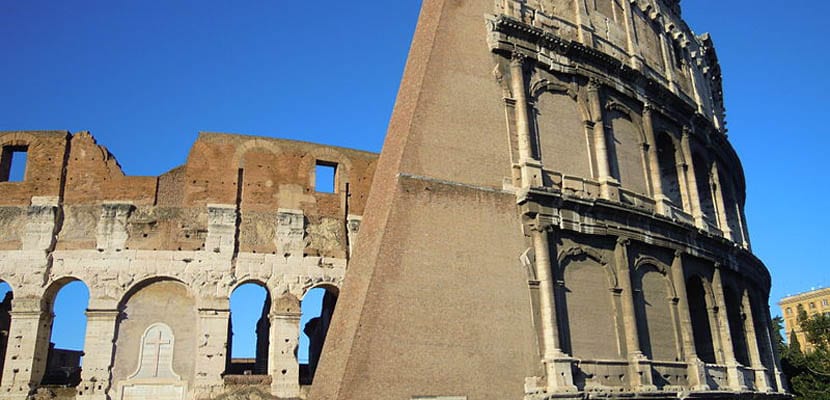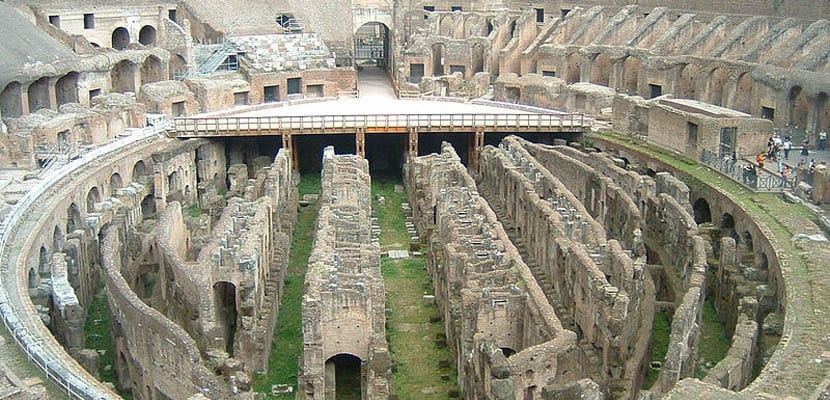
There are places you have to see at least once in your life, and the Rome Coliseum It is one of them. An architectural work that has stood for about two thousand years and that houses a very extensive and interesting history, which has been portrayed in multiple films and documentaries, so it will not be a stranger. However, surely there are many things you did not know about this Italian monument.
This Colosseum, also known as the Flavian Amphitheatre, construction began in 70 AD. C. under the mandate of Vespasiano, where was the lake of Nerón. There are many conjectures about the reason for its construction, and it is thought that it could be a work of triumph after the Roman conquests, but also that it was wanted to return to Rome an area that had been used by Nero personally to create his residence, the Domus Aurea. Do you want to know more details about the Roman Colosseum?
History and curiosities

Reliving the entire history of the Colosseum would take us hours, although it is certainly something very interesting. Its construction begins in the 70s and 72s d. C. and its current name comes from Colossus of Nero, a statue that was nearby and that today is not preserved. It was largely built on the Domus Aurea, filling Lake Nero with sand. It was finished under the mandate of Emperor Titus, in the year 80 AD There are many curiosities regarding this Colosseum, so we will try to discover some of them.
In this Colosseum there was a capacity of 12.000 people with 80 rows of stands. The importance of the spectators ran from the bottom up, with the richest and most powerful of Rome at the bottom, such as the Emperor, senators, magistrates or priests. In the upper stratum were the poorest Romans, of a much lower social status than the rest. Inside it many shows were carried out, the best known being gladiator fights. There were also fights with animals, public executions, re-enactments of battles, plays from classical mythology or naumaquias, which are naval combat. It is believed that in its beginnings the lower part was filled with water to carry out these battles.
This Colosseum it was inaugurated in 80 AD. C., and it was the largest amphitheater, with a celebration that lasted 100 days. The last games in it would be held in the XNUMXth century, beyond the date on which the Roman Empire is considered to have ended. Later, this building had several uses, since it was a refuge, factory and quarry. Finally it was used as a Christian sanctuary, so it managed to save itself to this day, since many of its stones were being used to build the new buildings in the city. At present it has been restored in some parts and the wooden deck that was the sand is not preserved, so the lower part can be seen, but it is one of the great works of this disappeared empire.
Structure of the Colosseum

The structure of this amphitheater was something totally new, since it was the largest that had been made. Inside they were the sand and the hypogeum. The arena is the playing field, an oval with a wooden platform that was covered with sand, where the shows were held. The area of the hypogeum is the subsoil with tunnels and dungeons where gladiators, the condemned and animals were housed until they came out to the arena. This area had a great drainage system to evacuate the water, it was thought that after the naval shows of naumaquia. The area of the Cávea is that of the stands, with the podium, where the most illustrious characters were placed.
Another part that surprises even today are the so-called vomitories, which are the exits through which the corridors were accessed to exit the Colosseum. They allowed a large number of people to leave in a short time, so that about 50.000 people could be evacuated in about five minutes. Many stadiums today have not been able to match these works and their great functionality.

In the outdoor area we find a facade on four floors superimposed, with columns and arches, and a closed upper area. This gives the amphitheater a much lighter look. On each level you can see a different style, something that was common in many buildings of the time. They use the Tuscan, Ionic and Corinthian styles, and on the top one they call compound.
The wake it is another part that is no longer preserved, and it is that it is a cloth cover that was deployed to protect the public from the sun. Poles made of wood and cloth were used, initially made of sails, and later made of linen, which was much lighter. There were a total of 250 masts that could be used separately to cover only some parts if necessary.
The Colosseum today

Today, the Roman Colosseum is one of the biggest tourist attractions in the Italian city. In 1980 it was declared a World Heritage Site by UNESCO, and in July 2007 it was considered one of The New Seven Wonders of the Modern World.
Currently this attraction is paid, and to be able to see it it is better to be first thing in the morning to be able to get a ticket as soon as possible. It opens at 8.30am every day and tickets for adults cost 12 euros. Another way to get the ticket is to use the Roma Pass, a card to obtain discounts at different attractions and monuments in the city, also avoiding having to queue.
Inside the Colosseum you can take guided tours, and on the upper floor there are a museum dedicated to the Greek god Eros. Another of the events related to the Colosseum is the procession of the Pope's Way of the Cross on Good Friday every year.